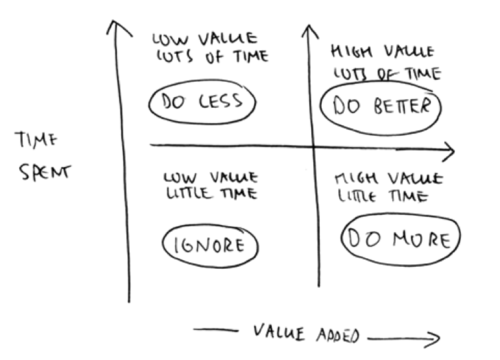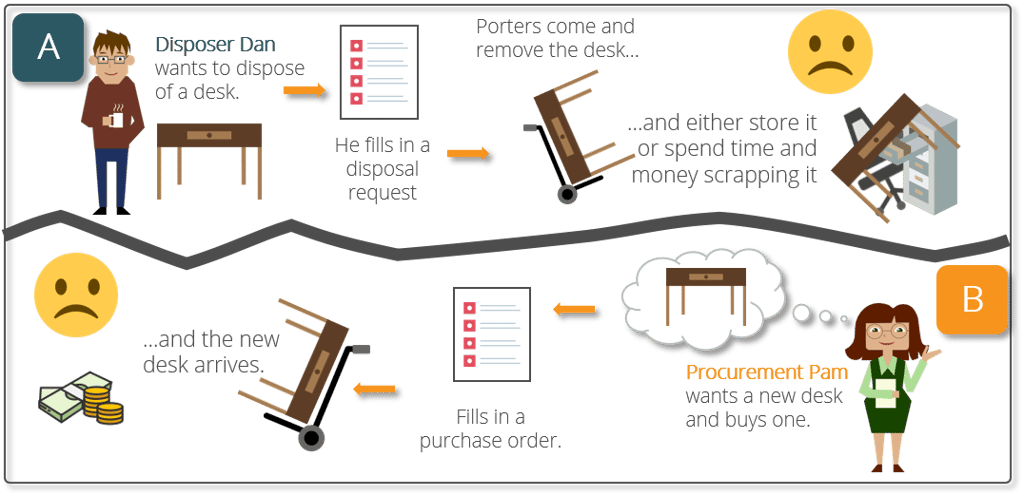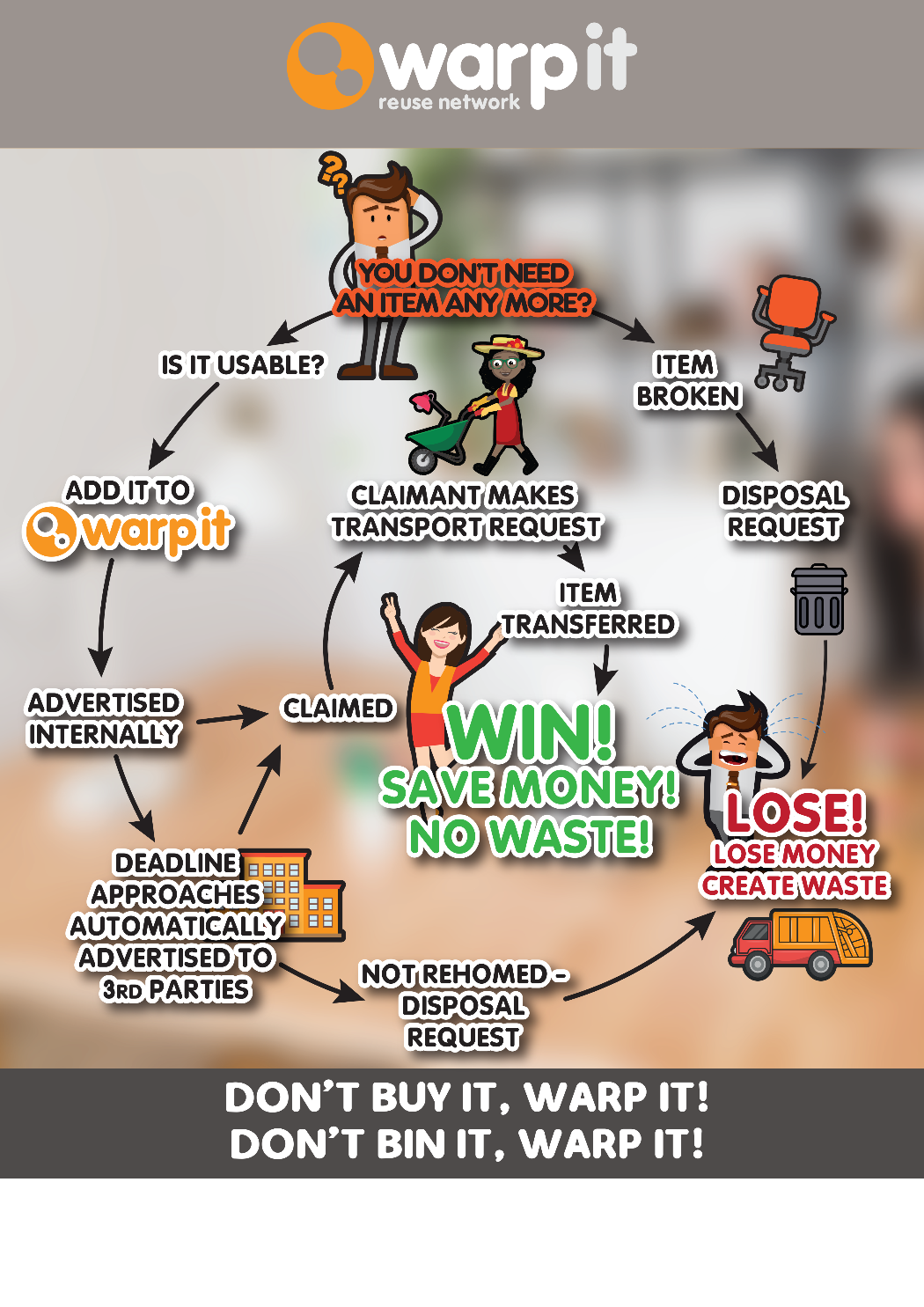Warp It’s founder, Daniel, was talking to Jonathan Latko from Temple University in Philadelphia about how he made a business case for the development of surplus asset reuse in the university.
One of the most striking things he shared was how he would look at an existing process and do a time-motion study on it.

What is a time-motion study?
You essentially use a stopwatch to measure the amount of time it takes to do certain cycles and processes. Jonathan analysed how much time, effort, expenditure and revenue was incurred or generated as part of the reuse process. He mapped it out for each of the waste streams he was interested in at the time. At this point Daniel became very intrigued, as it was an exceptional idea for getting operational buy in to reuse and sustainability.
The model
If you can map out the existing process and the various inputs along the way from staff, plus the energy and the finances, and you can generate accurate data from that work flow, you have something you can use as leverage.
Once you’ve mapped out and gathered data for the existing process, do a trial of the new process you’d like to implement. If you don’t have the resources, make well researched estimations. This will give you a business case for saving money, time and energy.
Relaying the information to people
Some people don’t like the thought of more automated or efficient practices, because it makes them think they won’t be able to fill their days, and that might encourage the thought of redundancy. This isn't the case. If you can save people time and effort in their regular duties, they aren’t going to feel their job is being threatened, they are going to think “Great! Now I have more time to get on with the meaningful work”.
Winning their buy-in
By mapping out operational workflows and showing the improvements you can make by way of your project, you can win buy-in. For example, with Warp It, we focus on reusing certain assets within the estate, between estates and between organisations.
The old process is slow:
- A staff member calls up a porter and requests the disposal of a chair
- The porter adds it to their schedule for the week
- The porter goes to pick up the chair a few days later, they go to the location of the chair, they put the chair into a van, the van goes to a yard and
- The porter drops off the chair, where it gets forgotten about or scrapped (at a cost and time input). If the chair is lucky, it may go to a store room whilst someone looks for a new home for it.
On the flip side of this process
- Someone on the estate still buys a new chair at some point and fills in a purchase order
- The porter still has to deliver a brand new chair once it is delivered. Often the same or similar to one they just threw away!

A better scenario
For a wiser organisation, the scenario would be
1) For the chair to go straight onto an online portal where a staff member (the disposer) fills in an online form and lists it.
2) The person who claims the chair fills in an online form and the porter gets a request to collect and deliver it.
3) The porter goes and gets the chair from the point of disposal and takes it directly to the new owner.

Everybody wins
- The person who disposed of the chair is happy because it’s gone.
- The porters are happy because they avoided double handling.
- The porter’s boss is happy because they’ve avoided waste handling costs.
- The new owner of the chair is happy because they didn’t have to buy a new chair.
- The porters saved time.
- The porter’s boss reduced expenses.
- The chair’s new owner saved money from the procurement budget.
- The chair's new owner didn;t have to fill in a purchase order- one of the main drivers!
This is all an example of analysing the workflow and seeing what benefits might be there for the new improvements being suggested. Going forward, it’s a good idea to include workflows in your business cases, and there’s a lot of nice apps and pieces of software out there that can help you put these together (guide here).
Another way to get operational buy in is to host a workshop! Check out our guide here.
We have already created a number of workflows that are common for a reuse program. You can download them below.









